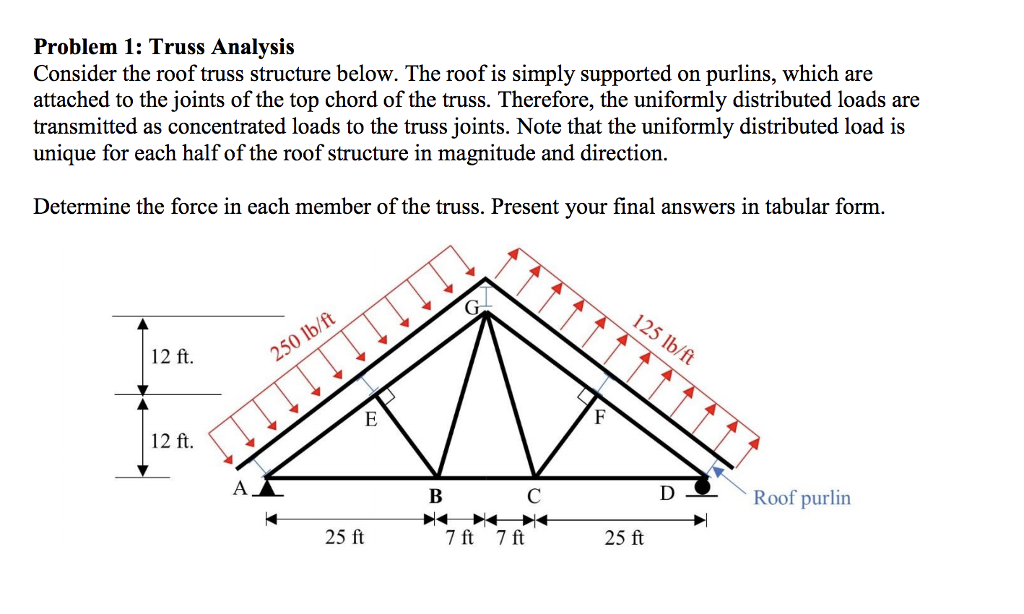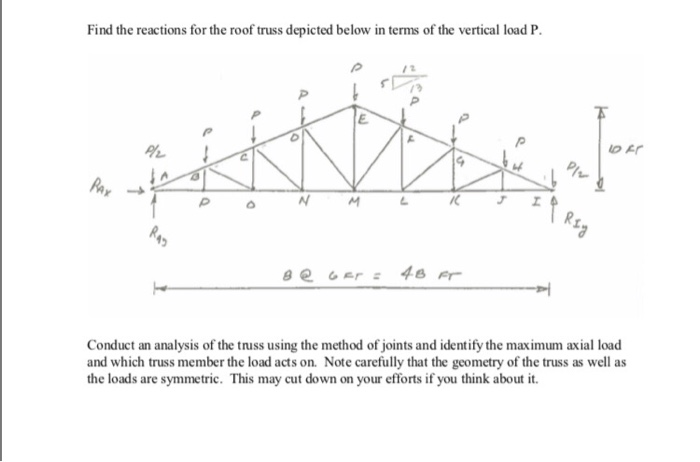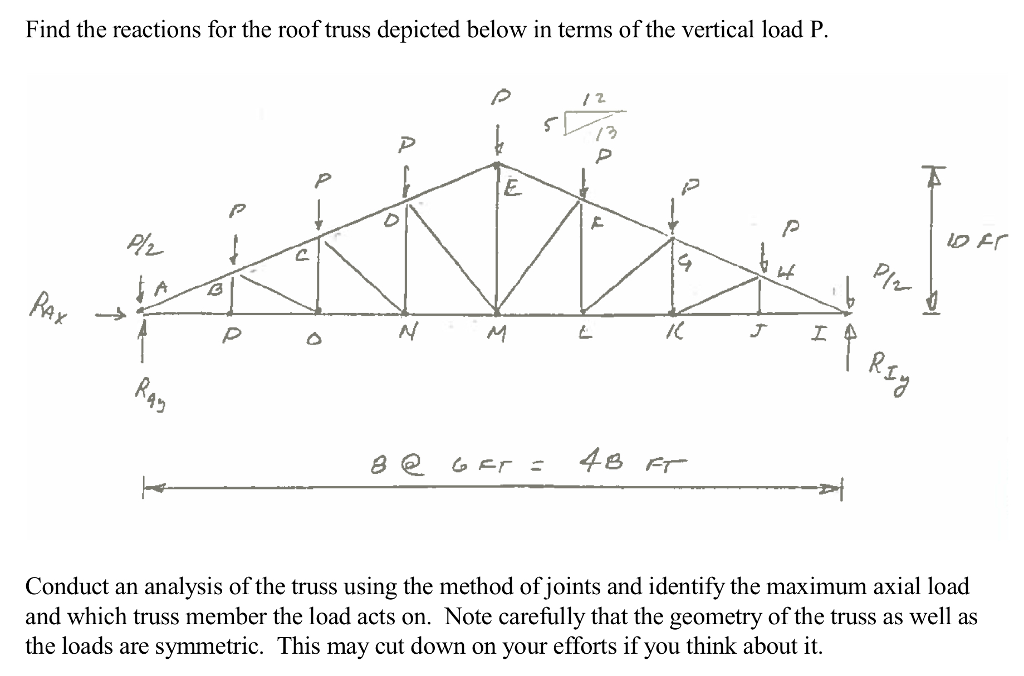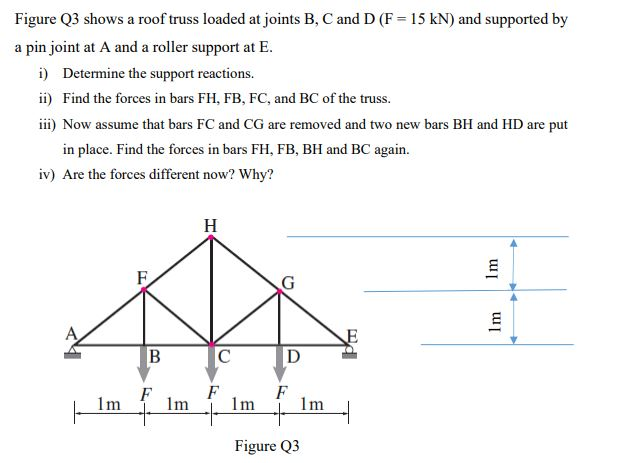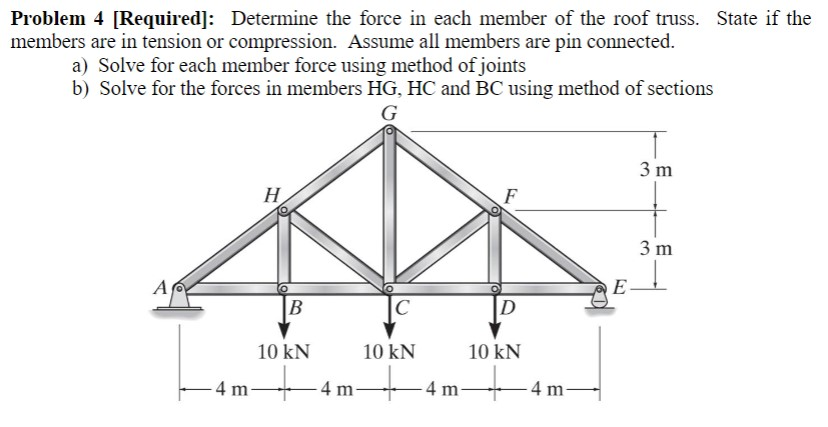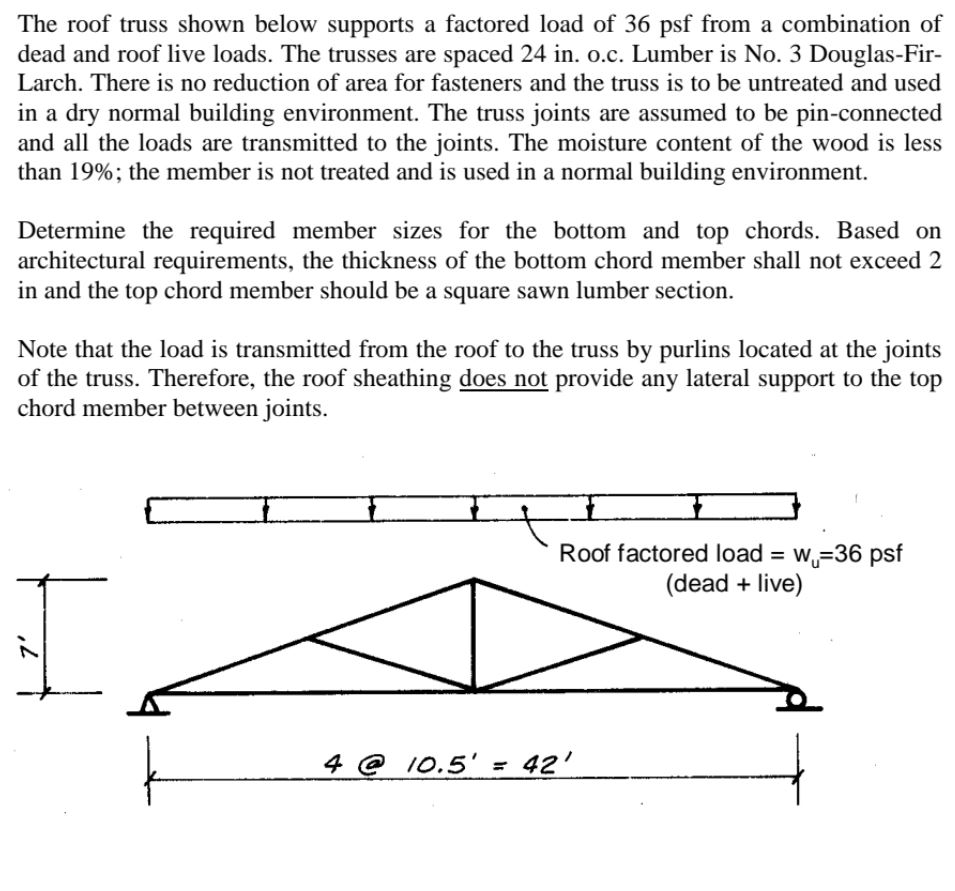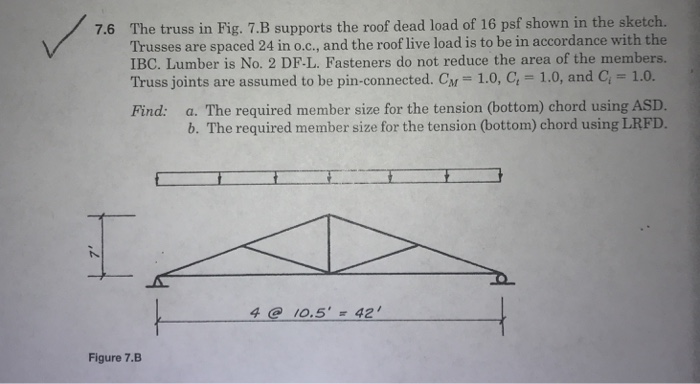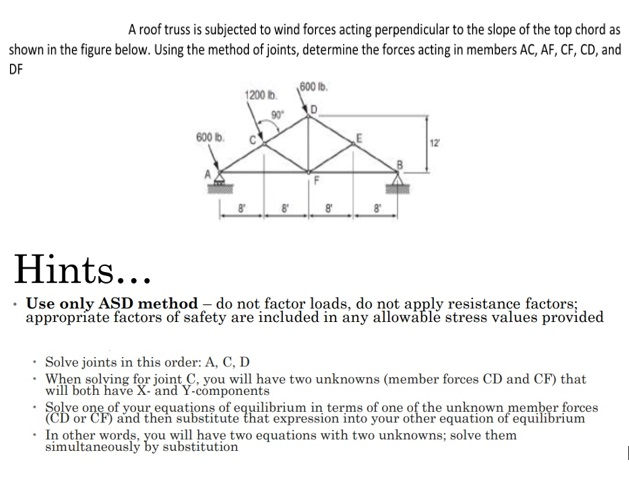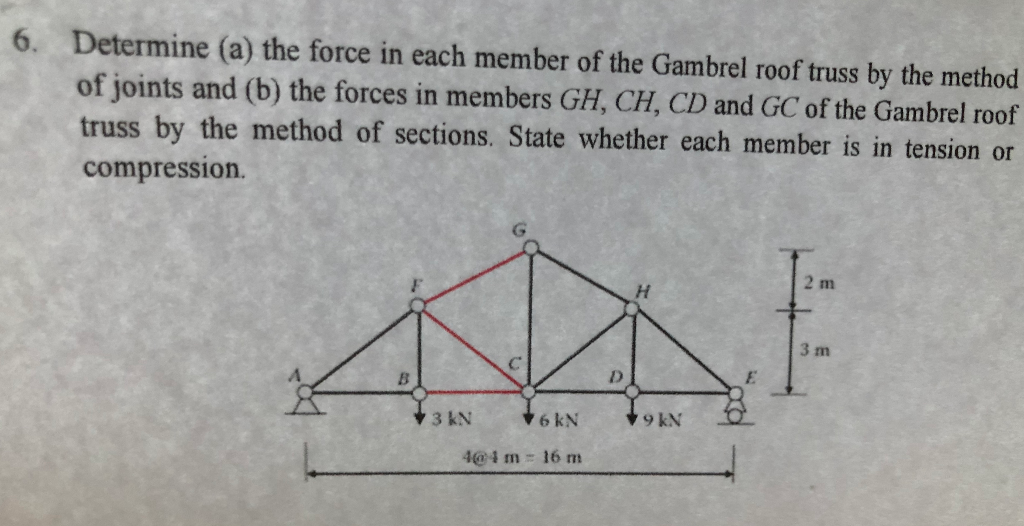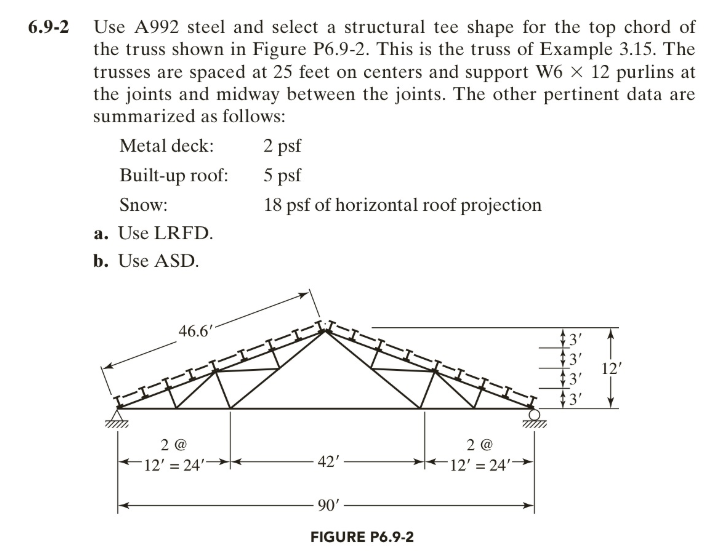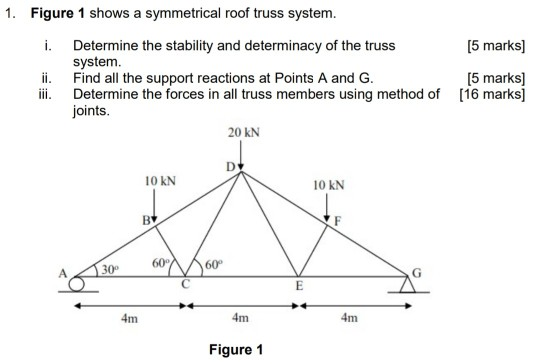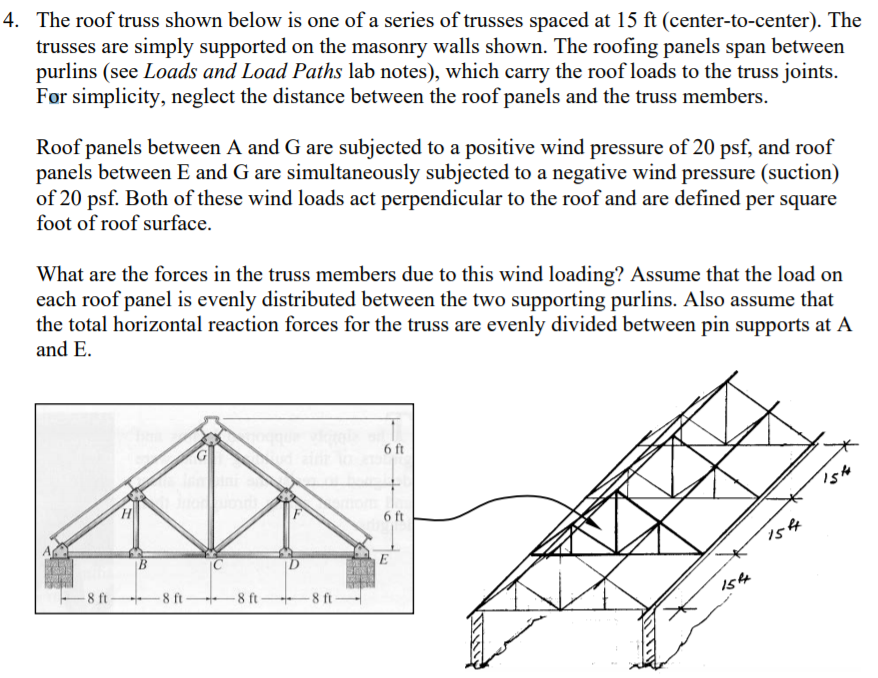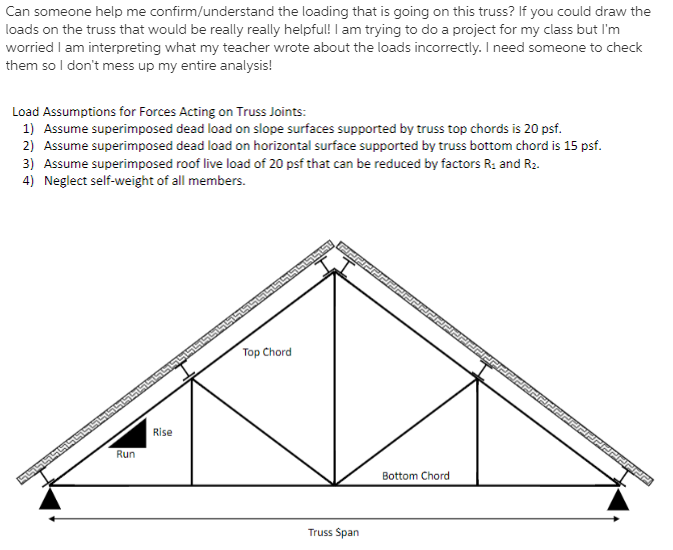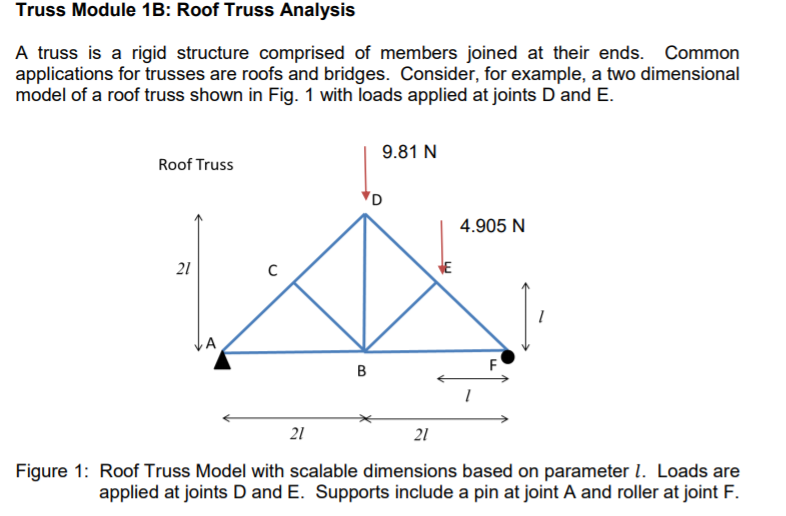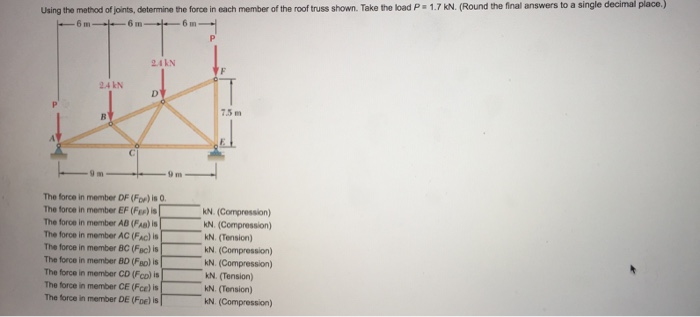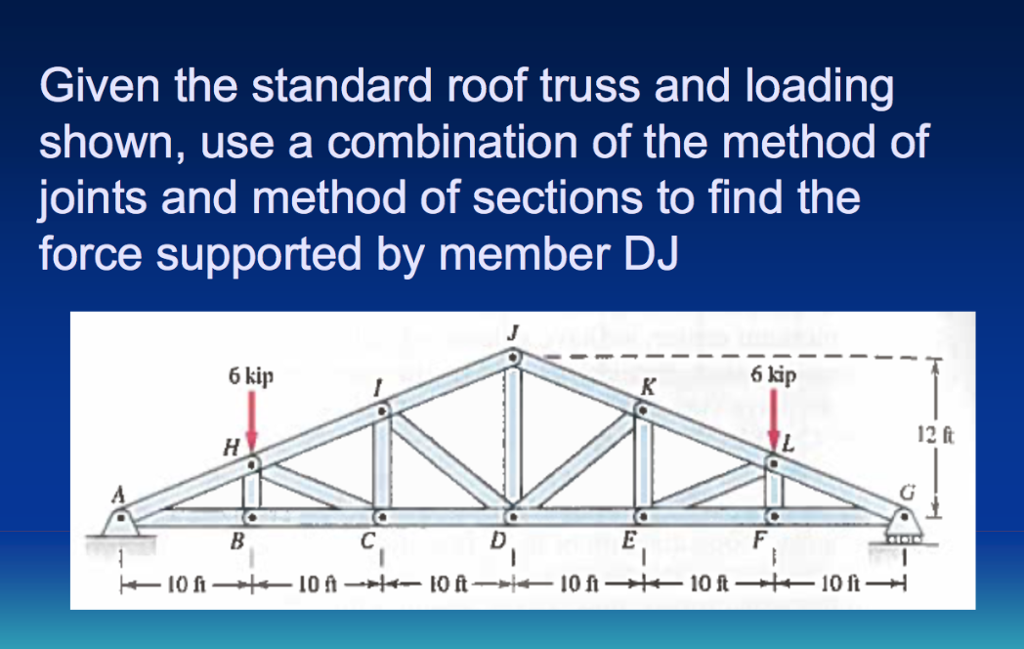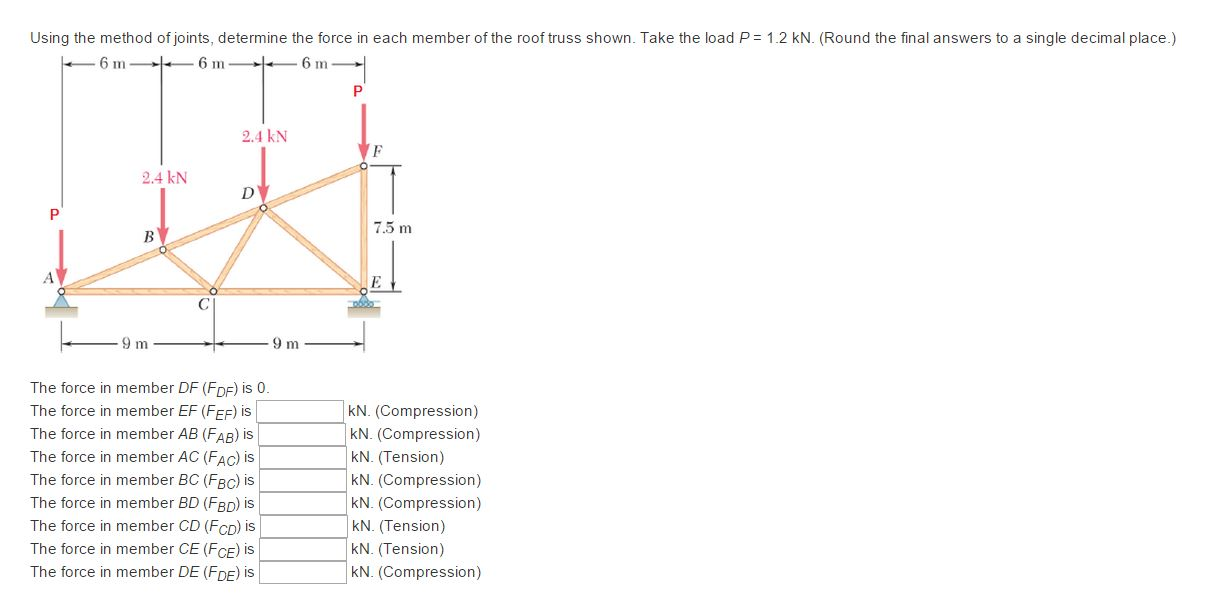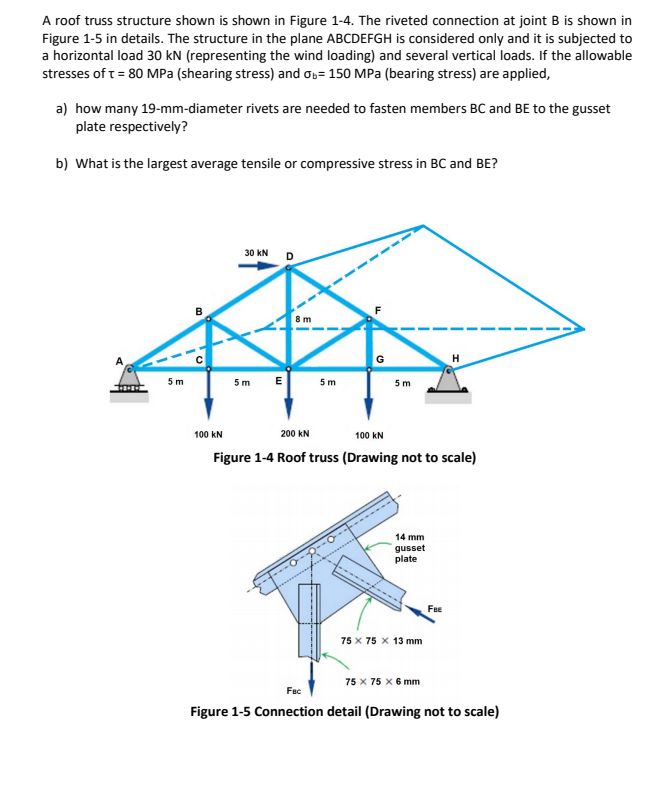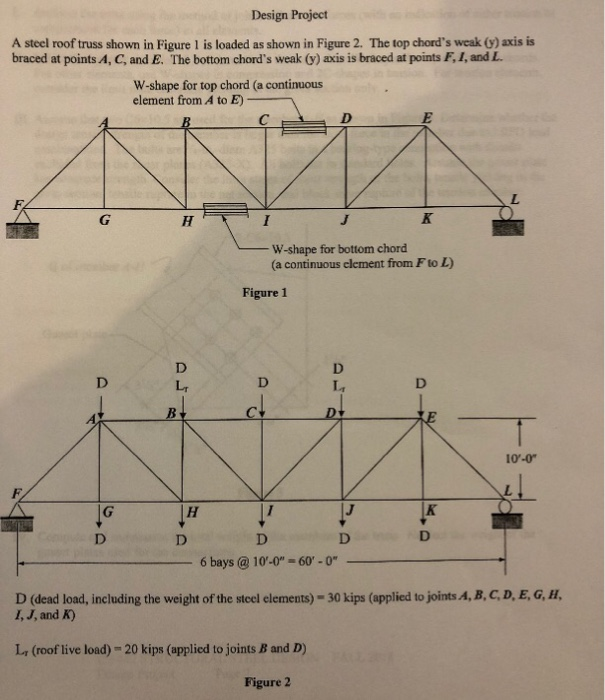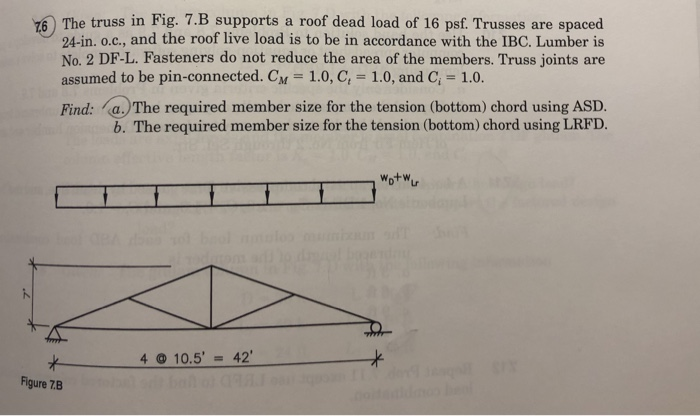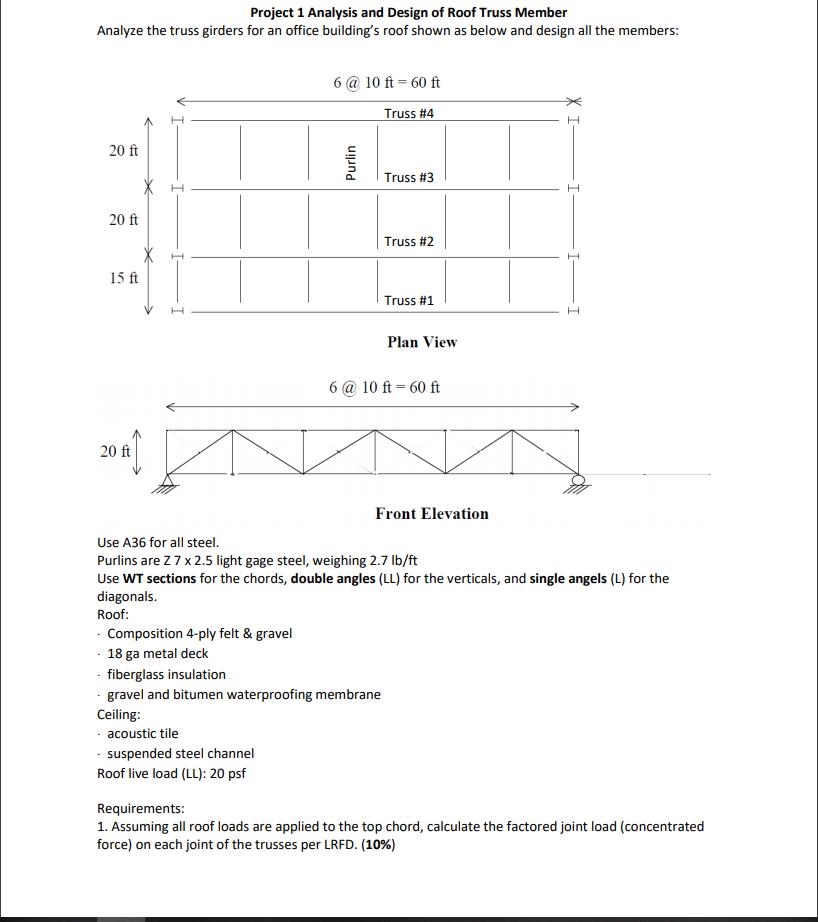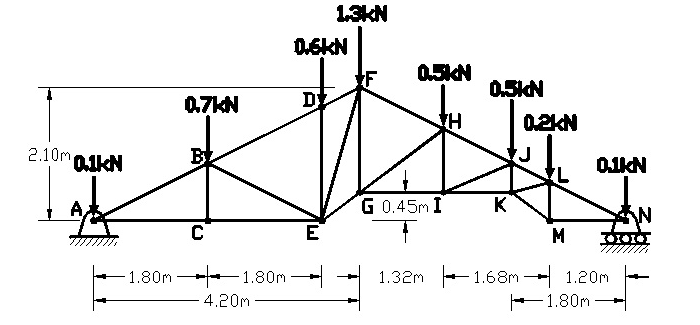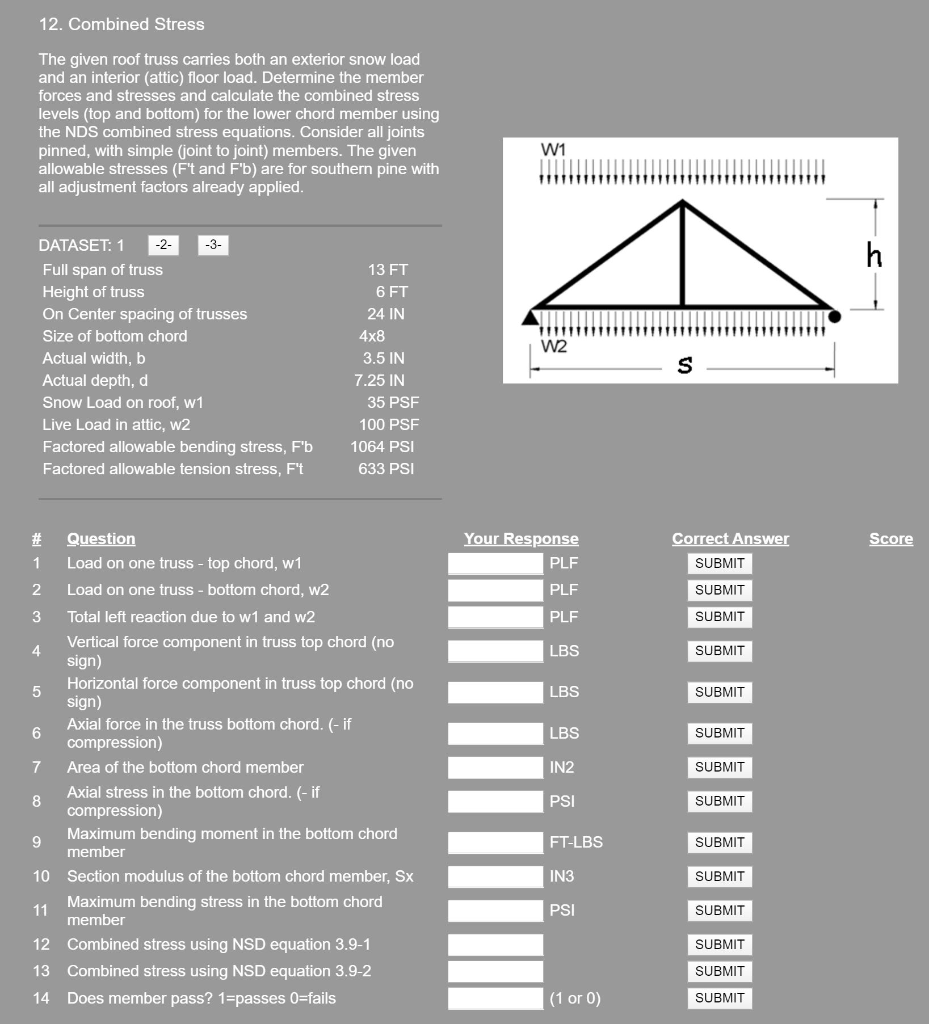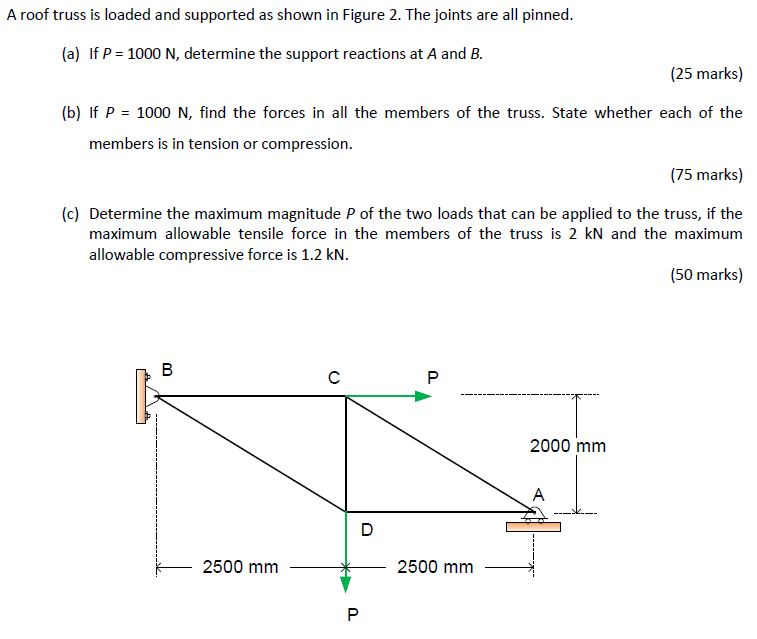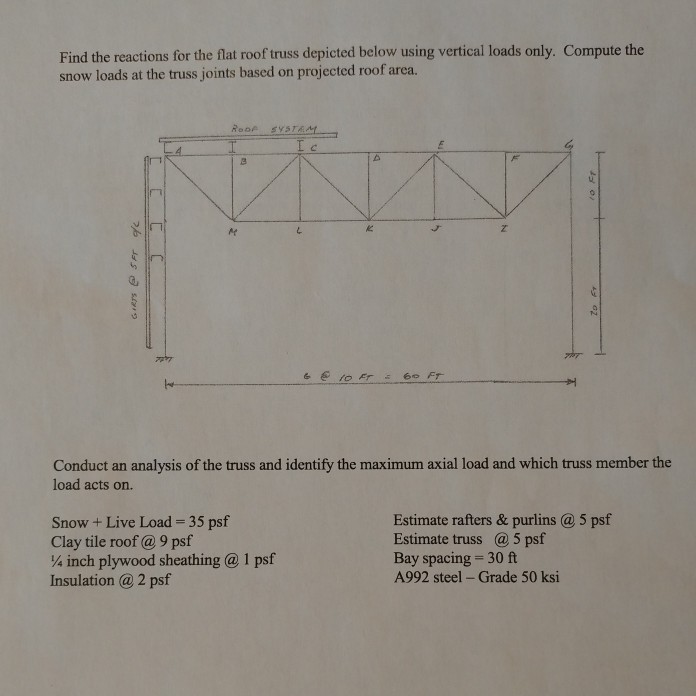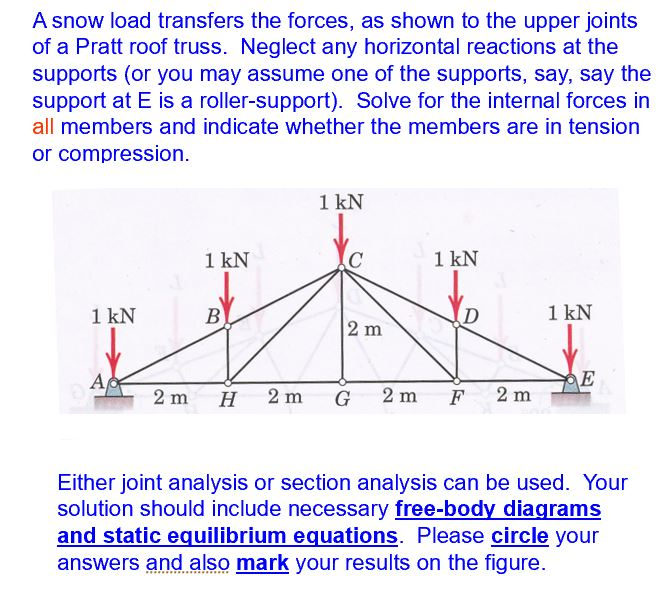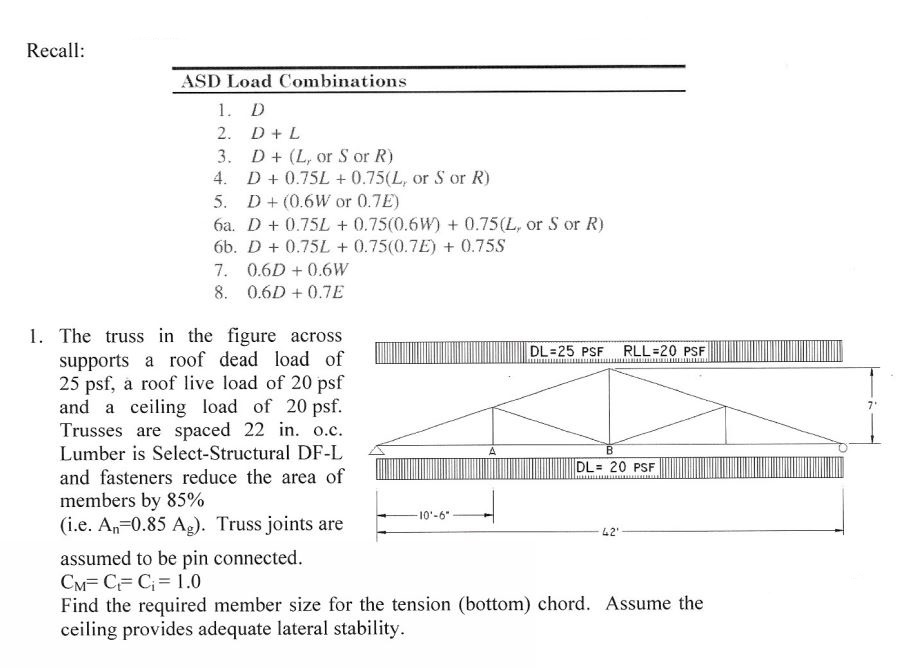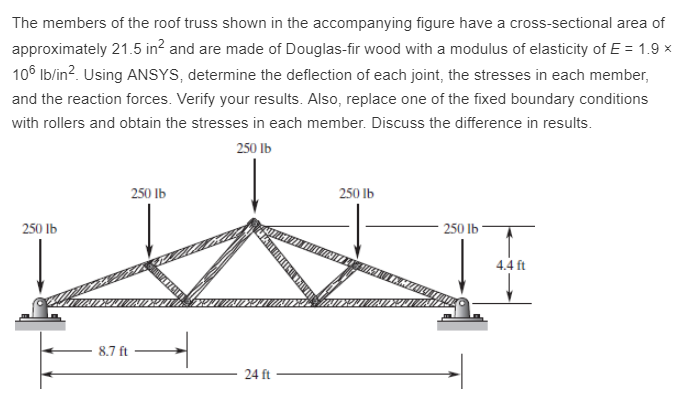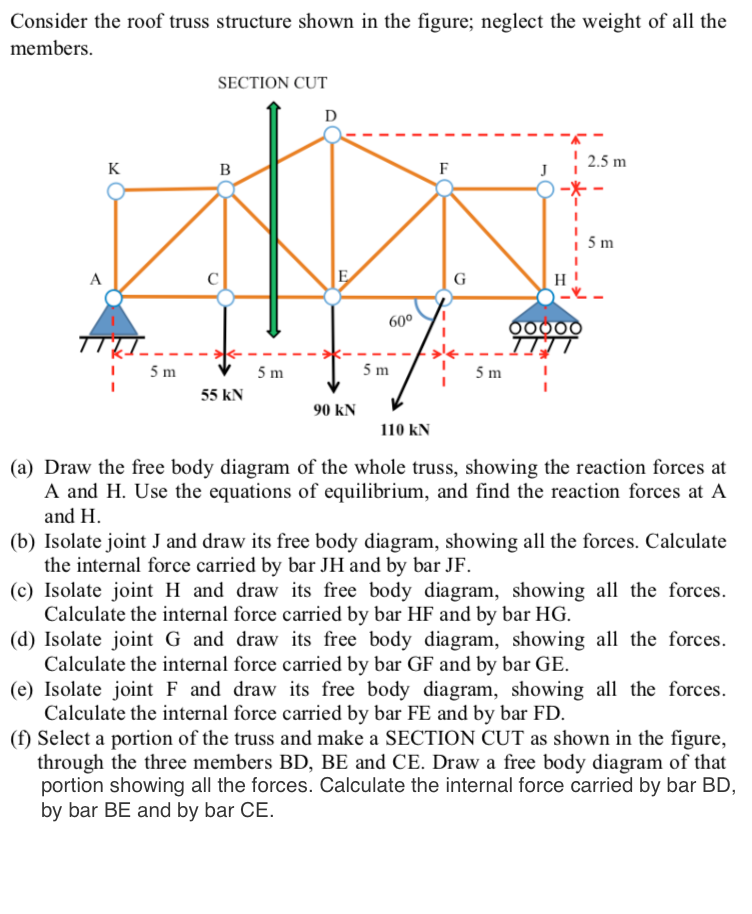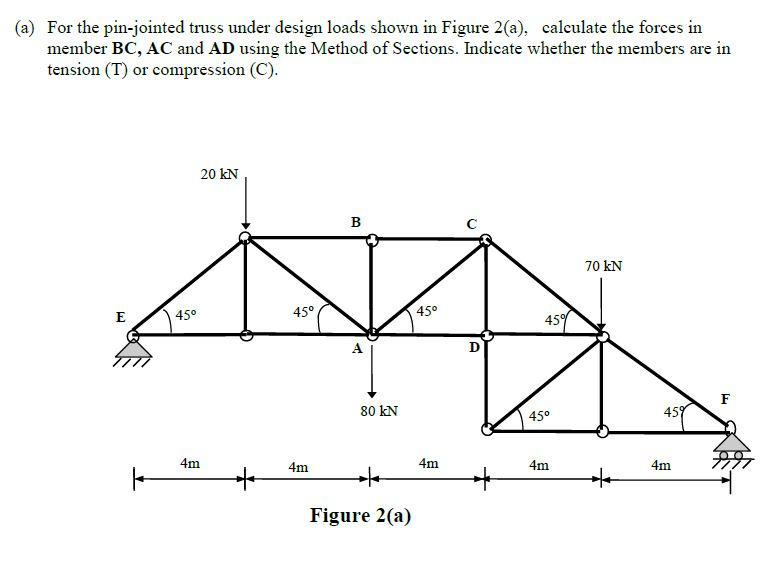Finding Roof Loading On A Truss At Joints Chegg

4 determine the external reactions.
Finding roof loading on a truss at joints chegg. The truss in fig. Fasteners do not reduce the area off the members. 2 what type of load is acting on the roof truss shown in the figure roof self weight snow or wind. Truss joints are assumed to be pin connected.
State whether each member is in tension or compression. Trusses are spaced 24 in o c and the roof live load is to be in accordance with the ibc. The roof is simply supported on purlins which in turn are attached to the joints at the top chord of the truss. Neglect any horizontal reactions at the supports and assume all members are in tension.
For simplicity neglect the distance between the roof panels and the truss members. 39 2 the internal force in member ef. 3 determine the loads on the roof truss based on the tributary area and the load path. For f1 8 6 and p 17 2.
7 b supports a roof dead load of 16psf. Self weight of the timber can be ignored in the analysis and design of the truss. Use the method of joints for both numbers to determine the force in each member of the roof truss shown. The truss is to be designed using seasoned f22 grade jarrah timber.
Point loads f1 and f2 applied at joint 1 2 and 3 represent the permanent and imposed loads on the truss respectively where the imposed load is occupancy live load. The roofing panels span between purlins see loads and load paths lab notes which carry the roof loads to the truss joints. The reaction at eis p f1 f1 f1 f1 b в 2 m 2 m h 2 m g 2 m f 2 m select one. 25 8 o b 5 7 o c.
